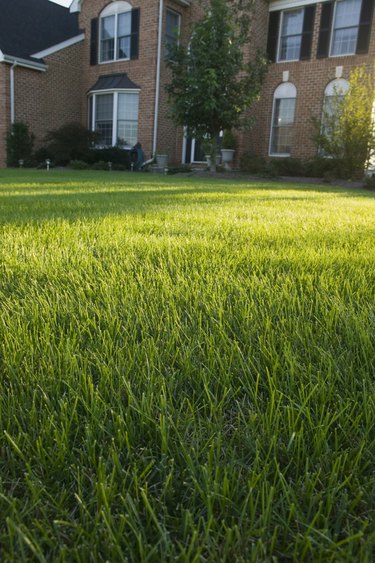Things You'll Need
Broadleaf herbicide designed for use with southern grasses
1 lbs. lawn fertilizer for every 1,000 square feet lawn
Lawnmower

Killing clover in St. Augustine grass involves several different methods. Although the proper herbicide will remove clover and other broadleaf weeds from your lawn, you can also implement certain strategies that reduce the likelihood of the clover showing up again, or even spreading in the first place. It is important to use the right type and amount of herbicide in a St. Augustine lawn; mistakes will tend to kill the grass as well as the clover. Killing and otherwise preventing the growth of clover requires proper lawn care and proper mechanical maintenance in addition to the use of herbicide.
Step 1
Obtain an herbicide from your garden or lawn supply store suitable for use with southern grasses. The herbicide should mention somewhere on the packaging that it is effective against clover specifically or broadleaf weeds in general. If you are trying to kill the clover before it grows, select a pre-emergence herbicide. This type is especially useful when you are working with a thin or younger lawn. Otherwise, choose a post-emergence herbicide.
Video of the Day
Step 2
Apply the herbicide in the precise amounts directed by the packaging. Overuse of the herbicide may damage or kill your lawn.
Step 3
Fertilize your lawn every month during the growing season. If your soil is sandy, use no more than 1 lb. of fertilizer per 1,000 square feet of lawn. If your soil is thicker, use slightly less. Keeping the lawn healthy and growing vigorously will enable the St. Augustine grass to compete with the clover, preventing it from gaining a foothold in your lawn. Consult with a garden center in order to determine the best type of fertilizer for use with the soil in your area.
Step 4
Mow your lawn regularly. Mowing will prevent clover plants from going to seed, which will make clover germination in the next year much less likely. Mow every five days if you are keeping your lawn below 2 inches in height, weekly or almost weekly for a mowing height of 2 1/2 inches, and every two weeks for any greater height. If you keep your grass shorter, you will be able to more effectively keep the clover under control. Mowing frequency can be reduced during the winter and late fall.
Video of the Day